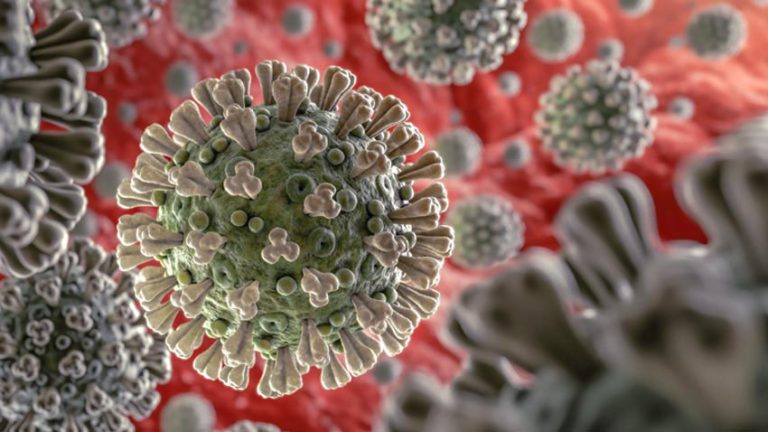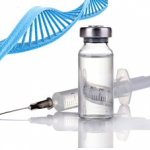Of all the changes 2020 had brought, almost nobody saw coronavirus disease 2019 (COVID-19) coming.
First reported in late December 2019 in Wuhan, China, the newly discovered coronavirus (2019-nCoV) quickly made its way around the globe, killing thousands and sickening hundreds of thousands more. There is quite a bit of information out there to disseminate we felt it time to give an overview and a few thoughts on Covid-19; as this situation is fluid we do expect to add more information in future posts.

On March 12, 2020, the World Health Organization declared COVID-19 a pandemic, meaning the disease had spread to multiple continents around the globe. Like other pandemics, COVID-19 seemed to move swiftly, taking governments, healthcare providers and citizens by surprise.
Not everyone was blindsided, though – a handful of experts in global health, the biosciences, national security, emergency response and economics got together in October 2019 to talk about what would happen if a global pandemic suddenly hit the world’s population. The experts discussed how Americans and others around the world would fare if a novel and highly transmissible coronavirus outbreak reached pandemic proportions.
Just as its real-life counterpart did, the fictional coronavirus jumped between countries and continents via international air travel. In both accounts, the virus caused problems for health care systems, economies, and political leaders. The fictional scenario assumed governments would first try closing borders and banning travel, but by the time authorities enacted border closures and travel bans, carriers would have unknowingly transmitted the disease to others before developing symptoms. The experts also projected the travel bans would disrupt trade and worsen international cooperation.

The simulation provided a shocking glimpse into the near future, but in today’s rapid-fire news cycle, very few people took notice. When the predictions began to come true in the form of COVID-19, many people regarded the threat somebody else’s problem because it was occurring in another country and could never reach the shores of our nation. Others thought COVID-19 was nothing more than a seasonal influenza. They were wrong on both counts.
COVID-19 is Here, and it is More than Just a Flu
The first patient with COVID-19 walked into a U.S. emergency department on January 19, 2020. Today, thousands of Americans have tested positive for novel coronavirus.
COVID-19 is similar to the flu in many ways, and is significantly different in other ways. Both are infectious illnesses, for example, and both cause a dry cough and fever. Influenza causes aches, chills, fatigue, and headache and chills; these symptoms are less common with COVID-19. Flu symptoms come on suddenly, getting worse over a day or two. Symptoms of COVID-19 develop gradually, worsening over the course of several days.
COVID-19 is different from the flu in other ways:
- Difficulty breathing and shortness of breath are the hallmarks of COVID-19 – they are also signs to seek immediate medical attention; flu does not cause shortness of breath and difficulty breathing
- COVID-19 is more likely to kill than the flu – about 3.4 percent of people with COVID-19 have died and seasonal flu generally kills far fewer than 1 percent of those infected
- Unlike the flu, there is no vaccine for COVID-19, and it will probably take a year to develop one
- There is no treatment for COVID-19
- Children, who are typically at high risk of contracting flu, are at lower risk for COVID-19 than are older adults
With a higher basic reproduction number, which is the number of infections one infected person can cause COVID-19, is more infectious than the flu. COVID-19 seems to have a basic reproduction number somewhere between 2 and 2.5, so the average person infected with the coronavirus spreads the disease to 2 to 3 other people. The basic reproduction number of seasonal influenza varies from year to year, but is often about 1.28.
COVID-19 is wreaking havoc on nearly every segment of the population, but it presents special danger to some. Director of the National Alliance on Mental Illness (NAMI) HelpLine Dawn Brown reported an increase in calls to the NAMI hotline. Callers expressed a wide variety of concerns, including feelings of depression and loneliness from social isolation, worries about job stability and income, fears of getting sick, grief over the death of a loved one, and homelessness. “Right now, the bigger concerns are around anxieties about the unknowns, you don’t know what you don’t know, and the people we serve tend to be a little more vulnerable to anxiety and panic.”
What Happens in the Future Depends Largely on What We Do Today
Arguably late to the situation, the U.S. government issued The President’s Coronavirus Guidelines for America, which directs citizens to listen to state and local authorities, stay home when sick, self-isolation measures, and good hygiene. States have issued a variety of public health emergency declarations, including the activation of National Guards, school and business closures, and limits on event sizes.

The medical community geared up quickly in response to the pandemic. Hospitals began enacting preparedness plans, clinicians developed treatment plans for critically ill patients, and researchers immediately turned their attention to developing a vaccine. Mayo Clinic announced the development of a new test that provides results in 24 hours.
The actions of individuals, families, businesses and communities will have the greatest influence in how the pandemic ends – they will also bear the brunt of its consequences. In even the best case scenario, hundreds or thousands of people in the United States could perish; new research suggests the number of deaths in the nation could exceed 2 million.
While nobody knows exactly how COVID-19 will change our lives, almost everyone can agree that the changes will be profound.
To View Frank Magliochetti Press Releases Please CLICK HERE
Frank Magliochetti owes his professional success to his expertise in two areas: medicine and finance. After obtaining a BS in pharmacy from Northeastern University, he stayed on to enroll in the Masters of Toxicology program. He later specialized in corporate finance, receiving an MBA from The Sawyer School of Business at Suffolk University. His educational background includes completion of the Advanced Management Program at Harvard Business School and the General Management Program at Stanford Business School. Frank Magliochetti has held senior positions at Baxter International, Kontron Instruments, Haemonetics Corporation, and Sandoz. Since 2000, he has been a managing partner at Parcae Capital, where he focuses on financial restructuring and interim management services for companies in the healthcare, media, and alternative energy industries. Earlier this year, he was appointed chairman of the board at Grace Health Technology, a company providing an enterprise solution for the laboratory environment.


Mr. Frank Magliochetti MBA
Managing Partner
Parcae Capital
www.parcaecapitalcorp.com
www.frankmagliochetti.com
SOURCES:
https://www.whitehouse.gov/wp-content/uploads/2020/03/03.16.20_coronavirus-guidance_8.5x11_315PM.pdf
https://jamanetwork.com/journals/jama/fullarticle/2762996
https://www.mprnews.org/story/2020/03/12/new-mayo-clinic-test-could-speed-detection-of-covid19







